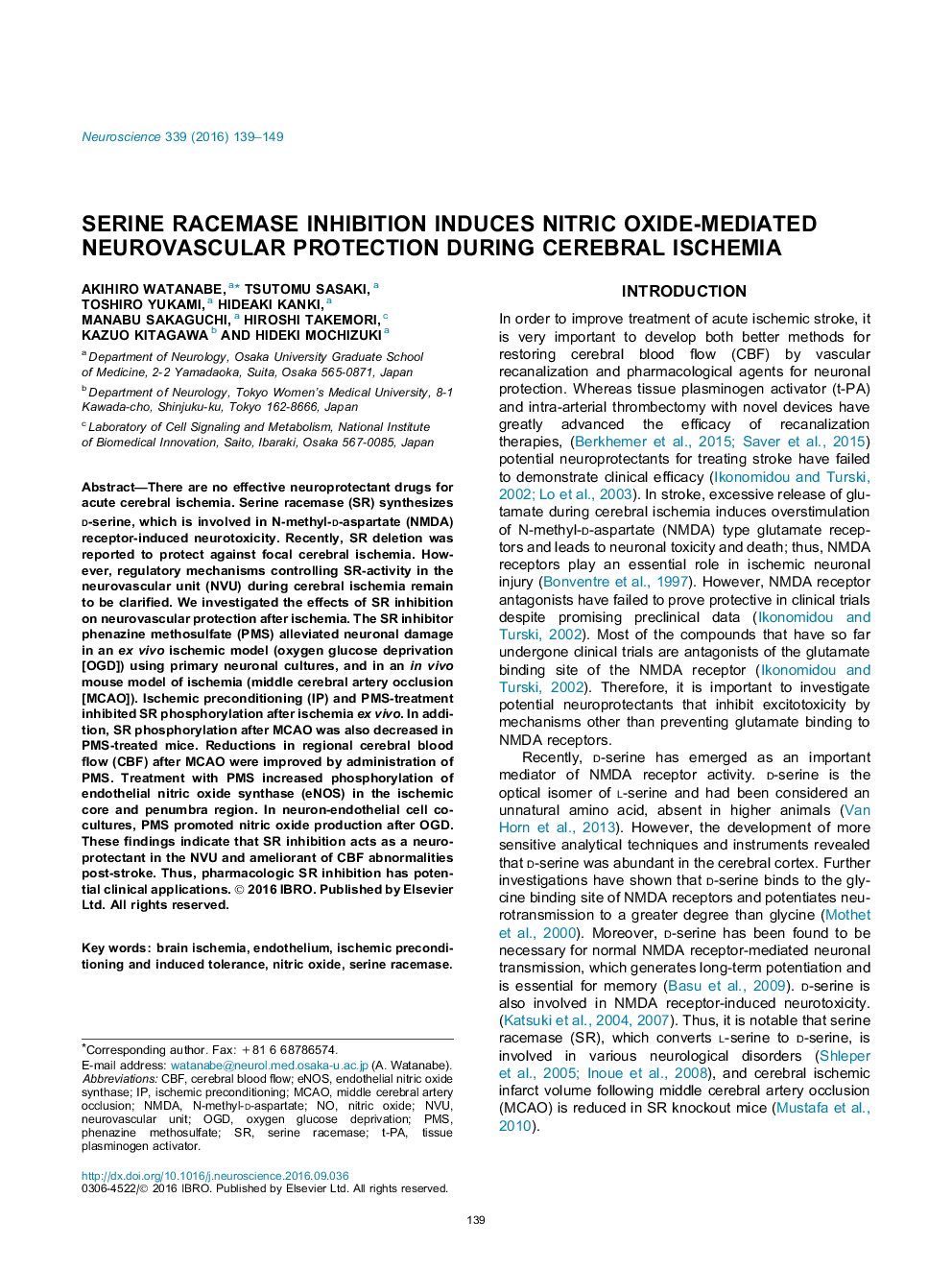| Article ID | Journal | Published Year | Pages | File Type |
|---|---|---|---|---|
| 6270667 | Neuroscience | 2016 | 11 Pages |
â¢Phenazine methosulfate inhibited serine racemase phosphorylation after ischemia.â¢Phenazine methosulfate attenuated ischemic neuronal damage ex vivo.â¢Phenazine methosulfate increased l-serine-induced eNOS activity and NO production.â¢Phenazine methosulfate protects against cerebral ischemia and excitotoxicity.
There are no effective neuroprotectant drugs for acute cerebral ischemia. Serine racemase (SR) synthesizes d-serine, which is involved in N-methyl-d-aspartate (NMDA) receptor-induced neurotoxicity. Recently, SR deletion was reported to protect against focal cerebral ischemia. However, regulatory mechanisms controlling SR-activity in the neurovascular unit (NVU) during cerebral ischemia remain to be clarified. We investigated the effects of SR inhibition on neurovascular protection after ischemia. The SR inhibitor phenazine methosulfate (PMS) alleviated neuronal damage in an ex vivo ischemic model (oxygen glucose deprivation [OGD]) using primary neuronal cultures, and in an in vivo mouse model of ischemia (middle cerebral artery occlusion [MCAO]). Ischemic preconditioning (IP) and PMS-treatment inhibited SR phosphorylation after ischemia ex vivo. In addition, SR phosphorylation after MCAO was also decreased in PMS-treated mice. Reductions in regional cerebral blood flow (CBF) after MCAO were improved by administration of PMS. Treatment with PMS increased phosphorylation of endothelial nitric oxide synthase (eNOS) in the ischemic core and penumbra region. In neuron-endothelial cell co-cultures, PMS promoted nitric oxide production after OGD. These findings indicate that SR inhibition acts as a neuroprotectant in the NVU and ameliorant of CBF abnormalities post-stroke. Thus, pharmacologic SR inhibition has potential clinical applications.
